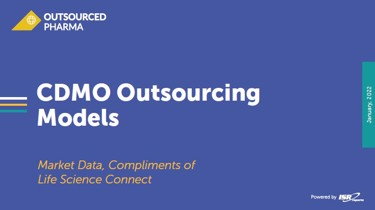CDMO Outsourcing Models: Performance, Selection, and Use

The practice of outsourcing manufacturing activities and services in the pharmaceutical industry continues to evolve. The past 25 years have shown advancement from a practice focused on identifying supply chain inefficiencies to improve operations and reduce costs, to simple “client–vendor” relationships that were transactional in nature, with little trust between the parties and an overarching custom of assigning commoditized work to contractors and keeping activities that might put the drug innovators intellectual property at risk in-house.
Over the years, trust between sponsors and CMOs began to grow; some of these interactions advanced to preferred provider relationships where a deeper connection between client and vendor led to a greater opportunity for cost savings. Data included in this report show that preferred provider relationships account for an average of 28% of commercial manufacturing among outsourcers, meaning this model currently captures the largest proportion of outsourced manufacturing work. However, respondents predict some manufacturing will shift to strategic partnerships in the coming three years.
This report explores how sponsor organizations use contract manufacturers through various outsourcing models, including tactical or transactional outsourcing, preferred providers, and strategic partnerships, to streamline costs, better manage capacity, improve efficiencies and decrease time to market. The data included in this report may surprise readers because it truly reveals what’s working and not working for drug innovators when it comes to outsourcing manufacturing.

